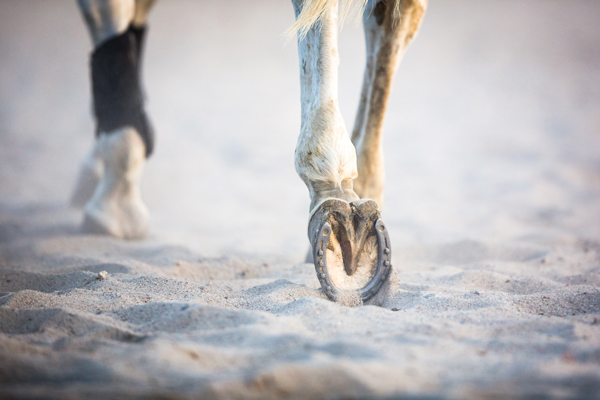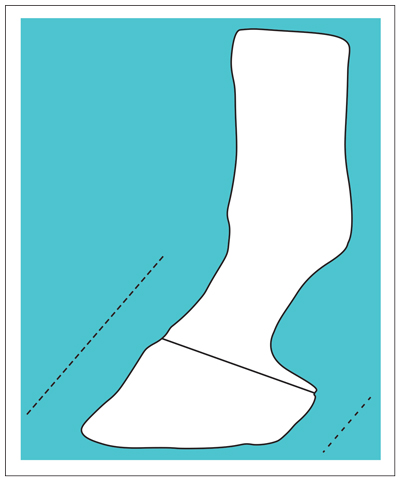We’ve all experienced the disappointment of preparing for a ride or a show only to find out that your horse has lost a shoe or is lame. While the horse’s hoof may seem small, it’s a very complex structure. Healthy hooves are critical to the horse’s well-being and soundness. If the hoof and associated structures aren’t healthy, you and your horse won’t be going anywhere! Some horses simply have poor conformation and structure in their feet.
Any farrier will tell you that although many hoof diseases can be helped, it’s difficult to try to fix feet that have been badly damaged over time, either by poor hoof care, improper use or poor breeding. The best way to help a horse have healthy hooves is to prevent problems before they start. Also, avoid purchasing or breeding a horse with bad feet.
Parts of Horse Hooves
What should a healthy foot look like? Ideally, it will have a strong hoof wall, a hoof and heel angle that are roughly parallel to each other (see diagram), and the foot should be balanced.
The outer part of the horse’s foot is made up of the hoof wall, coronet band, sole, heels and frog. All of these work together in a healthy foot. Your farrier can help educate you on how to look at a foot and tell the difference between a good foot and a bad one.
Good Management
You should pick out and examine your horse’s feet and check his shoes (if he wears them) every day. Horses can pick up rocks and other sharp objects that can injure their feet, and shoes can come off or get bent.
Horses should be on a regular trimming (or shoeing) schedule, typically every four to eight weeks. As your farrier gets to know your horse, he will recommend how often the feet should be maintained, as some hooves grow more quickly than others.
Hooves that are regularly allowed to become overgrown will distort painfully over time; the hoof wall can split down to sensitive tissues. Overly aggressive trimming can also make the horse sore and weaken the hoof.
Common Problems in Horse Hooves
Wet and dirty stall bedding or pasture footing can cause conditions like thrush, an infection that can cause lameness if untreated. Thrush has a bad smell and looks like black goo in the grooves of the horse’s sole. There are a number of medications that treat thrush, but it’s better to prevent it in the first place by keeping your horse in a clean, dry environment and picking his feet out daily.
Hoof abscesses can cause sudden and dramatic lameness. This will scare the wits out of you as you fear that your horse may be badly injured. If I’m called to see a horse that is acutely lame, the first thing I’ll look for is an abscess, although there are other causes, too.
Abscesses are common and generally straightforward to manage. They’re caused by dirt and moisture working their way into the hoof through small cracks or punctures. This can create a very painful infection in the sensitive tissues inside the hoof.
I see hoof abscesses most often when the environment has been dry for a while, then suddenly turns wet and muddy—or when the snow begins to melt.
Occasionally the horse’s leg will swell up, and you can usually feel an area of heat in the hoof. Your veterinarian should always come out if your horse is lame for any reason. I like to have the farrier there too so we can work together to solve the lameness problem.
By having some general knowledge of hoof anatomy, being aware of common problems, and offering a clean environment and good hoof management, you can keep your horse’s feet as happy and healthy as possible.
This article about how helping your horse have healthy hooves appeared in the Spring 2020 issue of Young Rider magazine. Click here to subscribe!




